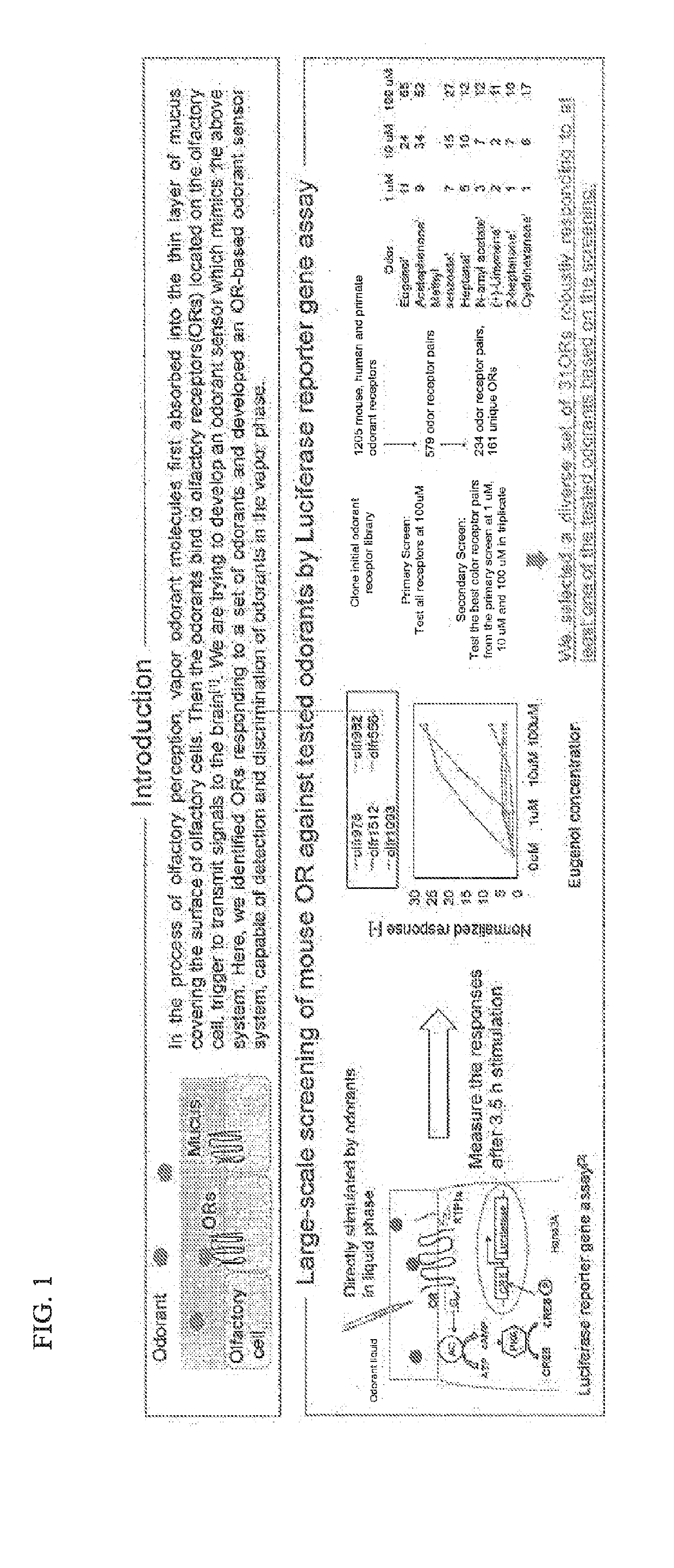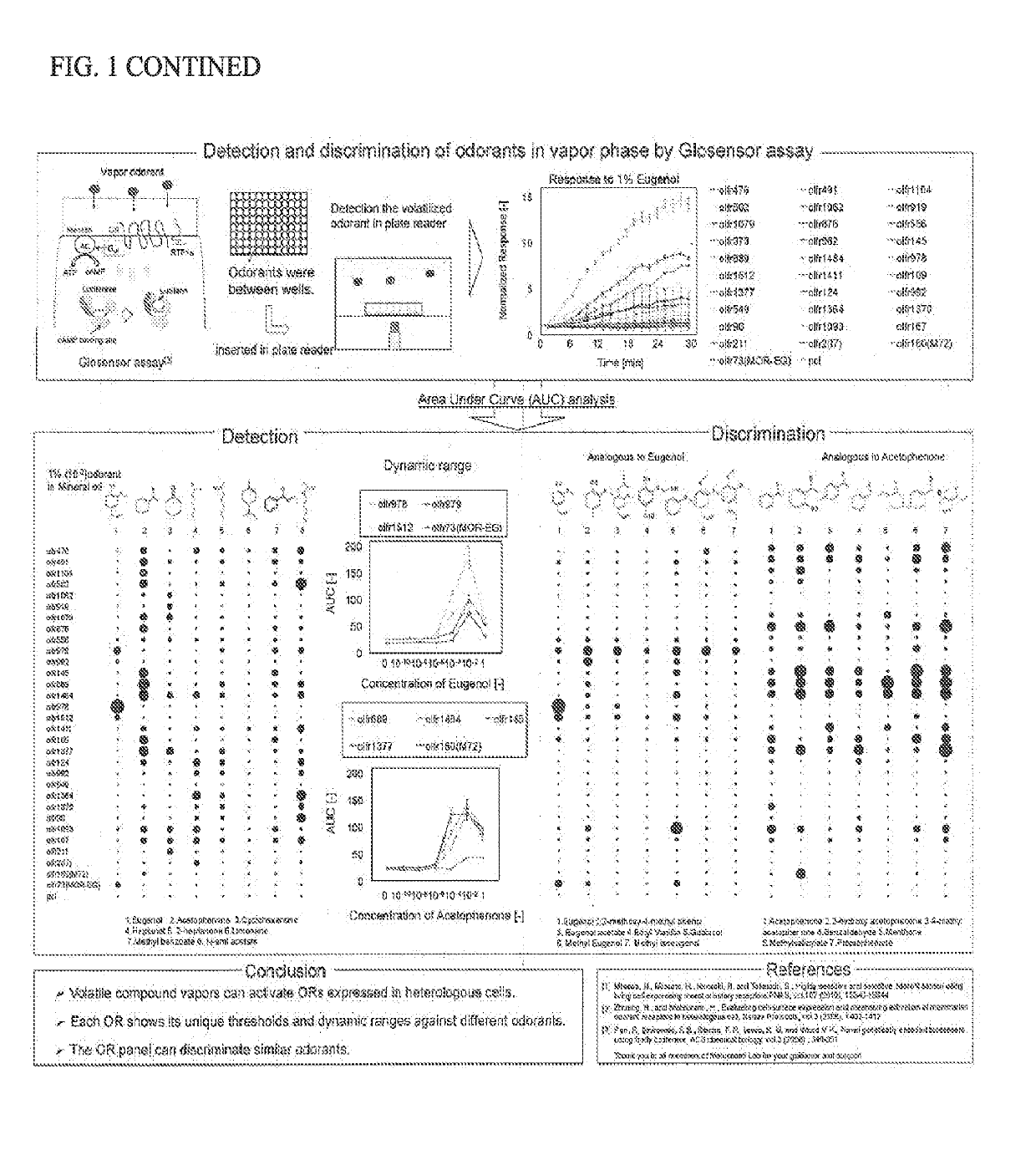Methods for vapor detection and discrimination with mammalian odorant receptors expressed in heterologous cells
a technology of odorant receptors and odorant vapor detection, applied in the field of odorant receptor based odorant sensor systems, to achieve the effect of enhancing odorant responses
- Summary
- Abstract
- Description
- Claims
- Application Information
AI Technical Summary
Benefits of technology
Problems solved by technology
Method used
Image
Examples
examples
[0133]The invention, now being generally described, will be more readily understood by reference to the following examples, which are included merely for purposes of illustration of certain aspects and embodiments of the present invention, and are not intended to limit the invention.
example i
[0134]This example describes vapor detection and discrimination with a panel of odorant receptors expressed in heterologous cells.
[0135]The method described herein was used to test whether ORs expressed in heterologous cells are activated in vapor phase (see, FIG. 1). In said embodiment, a diverse set of 28 ORs that robustly respond to at least one of the tested odorants, along with three well studied ORs, were selected. Individual ORs were expressed in 96-well plates in triplicates and the responses measured against vapor phase odor stimulation ranging from 10-10 dilution to undiluted odorants using the GloSensor™ assay system. This system was capable of measuring cAMP levels in real time. Significant responses were recorded at concentrations as low as 10−6 dilution, and robust responses were recorded as low as 104 dilution. Each OR showed a unique response profile to the odorant panel. Lastly, structurally analogous odorants to eugenol and acetophenone were tested. The results sho...
example ii
[0136]A comprehensive FACS analysis for a large repertoire of ORs in a heterologous expression system was conducted. Such experiments investigated which ORs are trafficked to cell surface membrane in heterologous cells by carrying out live cell surface staining of HEK293T cells transfected with 244 ORs with an N-terminal Rho tag in the absence of RTP1 and RTP2. In order to quantify the surface staining we performed fluorescence-activated cell sorting (FACS) to measure surface OR levels in these cells. 34 ORs were trafficked to cell surface, which were more than 0.14 fold change. These results indicated ORs are functional without the RTPs.
[0137]FIG. 2 shows A) FACS results for representative ORs (Olfr539, Olfr541, Olfr1362, Olfr715, Olfr1250 and Olfr653); B) A histogram of FACS results for 244 ORs. Fold changes were calculated using Olfr539, which was greatly trafficked to cell surface, and Olfr541, which was poorly trafficked to cell surface; C) ORs were tested and significantly tra...
PUM
 Login to View More
Login to View More Abstract
Description
Claims
Application Information
 Login to View More
Login to View More - R&D
- Intellectual Property
- Life Sciences
- Materials
- Tech Scout
- Unparalleled Data Quality
- Higher Quality Content
- 60% Fewer Hallucinations
Browse by: Latest US Patents, China's latest patents, Technical Efficacy Thesaurus, Application Domain, Technology Topic, Popular Technical Reports.
© 2025 PatSnap. All rights reserved.Legal|Privacy policy|Modern Slavery Act Transparency Statement|Sitemap|About US| Contact US: help@patsnap.com



